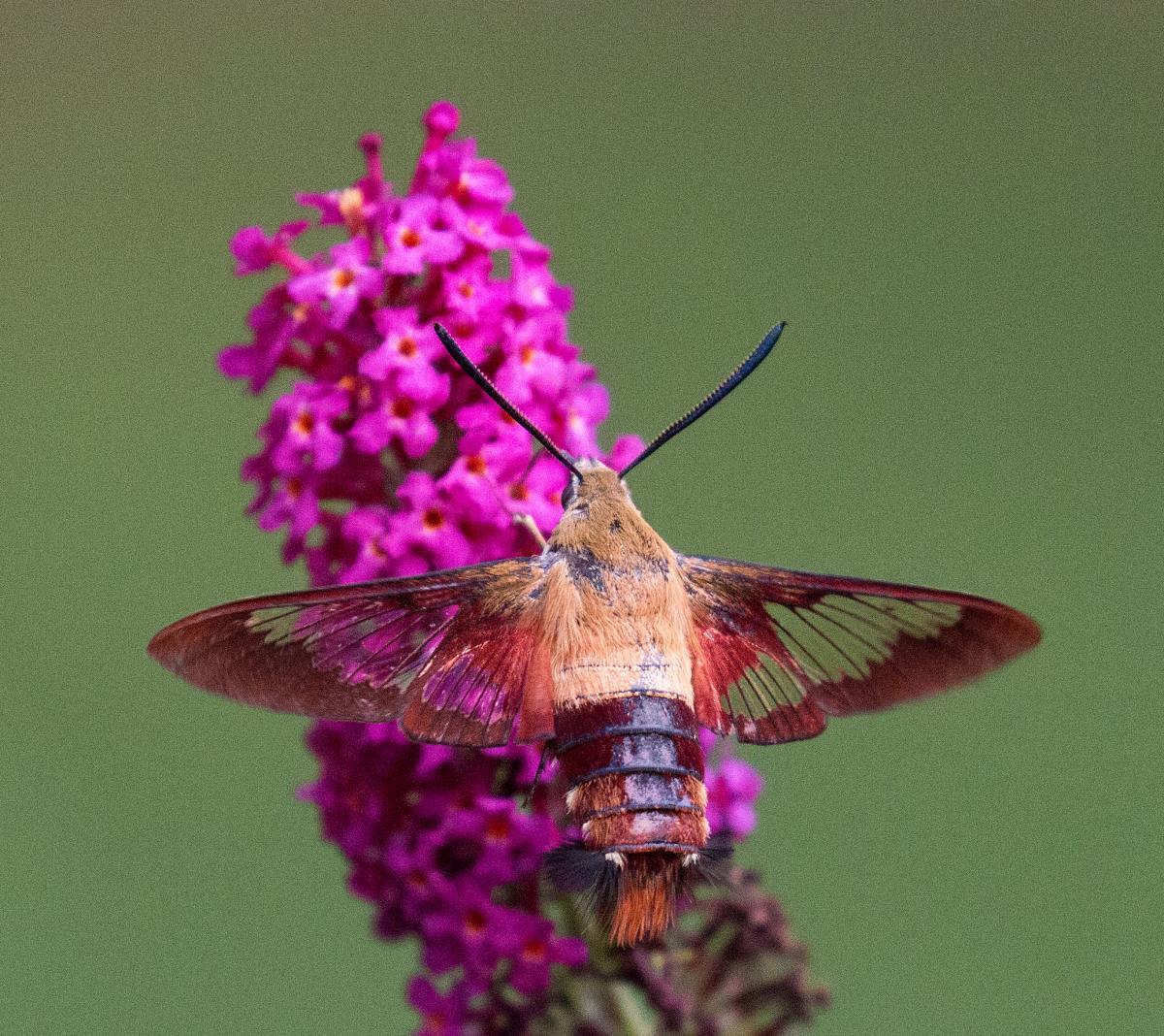There are probably a few specific critters that come to mind when you first hear the word pollinator. Maybe you picture the well-recognized colors of a Monarch fluttering through your backyard. Or honeybees and wasps buzzing from flower to flower.
Unfortunately, we tend to overlook some other key members of the pollinator community, and negative stereotypes continuously give them a bad rap.
Commonly referred to as the “unsung heroes of pollination,” bats and moths are vital pollinators in our ecosystems.
Bats
Not always portrayed in the best light, bats are nocturnal pollinators that many plant species in warmer and tropical climates rely on for survival. Just as birds and bees do, bats collect nectar as they travel to different plants, all transferring pollen on their fur to each plant along the way. It’s a win-win event for both species and essential for the area’s biodiversity.
Lesser Long-Nosed Bat (NPS)
So what sets bats apart from other visitors? Some plants heavily depend on them after the sun sets. In the Southwestern United States, bat pollination is critical for desert plants like
Saguaro and Organ Pipe cacti that only bloom at night.
Saguaro blooms
While not all bat species pollinate nectar-producing flowers in the desert, many of them are responsible for spreading seeds and removing pests from food crops. What other species do you know that can eat around 1,000 insects in an hour? SCA interns have focused on research efforts to
better understand bat populations and to also create awareness around their many benefits.
Moths
Sure – they aren’t as eye-catching and can create holes in your clothing – but moths are tremendous players in the pollinator world. While bees and butterflies tackle their missions during the day, moths can fill in the gaps of forgotten flowers at nighttime. Large populations have been known to carry pollen greater distances than their daytime counterparts, greatly picking up the slack and completing the pollination cycle for plants everywhere.
Hummingbird moth
Although a majority of moths spend their time pollinating after dark, a few species like the Hummingbird moth can be found sipping nectar during the day as well. Due to their uniquely long tongues, they are able to successfully pollinate long-necked flowers that other pollinators can’t quite access.
Often misunderstood and not given nearly enough credit, the pollinators mentioned above deserve to be recognized for their significant roles in the environment. On June 22-28, pollinators around the globe will be celebrated as part of Pollinator Week 2020. SCA has several resources on small steps you can take to participate and help your local pollinators flourish.


